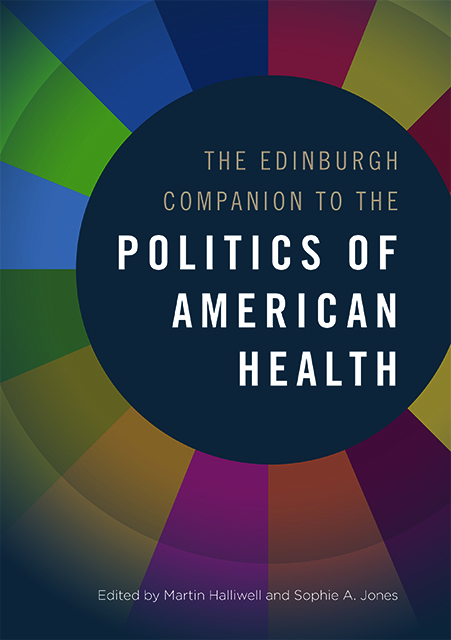Book contents
- Frontmatter
- List of Contents
- Notes on Contributors
- Introduction: The Political Landscapes of American Health, 1945–2020
- I Geography, Community and American Health
- II Critical Health Conditions: Debates and Histories
- III The Politics of Children's Health
- IV The Institutional Matrix of Health Care
- V The White House, Congress and Health Reform
- VI Justice, Ethics and American Health
- VII Public Health and Global Health
- General Bibliography
- Index
28 - The Rhetoric and Politics of American Ageism: Notes from a Pandemic
Published online by Cambridge University Press: 12 August 2023
- Frontmatter
- List of Contents
- Notes on Contributors
- Introduction: The Political Landscapes of American Health, 1945–2020
- I Geography, Community and American Health
- II Critical Health Conditions: Debates and Histories
- III The Politics of Children's Health
- IV The Institutional Matrix of Health Care
- V The White House, Congress and Health Reform
- VI Justice, Ethics and American Health
- VII Public Health and Global Health
- General Bibliography
- Index
Summary
Manulife Financial Corp. recorded big gains in profits from U.S. operations in the second quarter as large numbers of its long-term care customers died and stopped making insurance claims.
Today, the day I complete this essay, is 31 October 2020. In the second wave of coronavirus infection, more than half of American states are posting their highest number of new cases since the pandemic began; about one in every thousand Americans has tested positive for the virus and about two in every 100,000 Americans have died of it. By September 2020, there were outbreaks in 41,000 American nursing homes and other long-term-care facilities.
The US election is three days away.
My project is not, in the first instance, to track the pandemic or even to highlight its national politics, but rather, in the context of Covid-19, to focus on systemic bias against people who are old. 5 Using a rhetorical framework – an apparatus to discover the means of persuasion in a particular exigence – I will suggest an account of how Americans got to the point where old people have suffered and died disproportionately in conditions of Covid-19, and often without public sympathy. I will argue that older adults have been set up, over a long period of time, to be treated as lesser persons. In particular, I will explore the rhetorical procedures of a ‘slow’ ageism made spectacular in this pandemic. My question: what are the arguments and what are the terms – not least the unarticulated arguments and the unremarkable terms – that invested older people with so little value that their lives, in a time of crisis, became disposable?
Ageism in a Pandemic
Matters of health are always political, and so it is not surprising that, in the US, the coronavirus pandemic has been a political issue and not less ambiguously, in the first instance, a health and medical one. Metonymically, the voice of US President Donald Trump has suppressed the voice of Anthony Fauci, Director of the National Institute of Allergy and Infectious Diseases. Policies on masking, for example, with little or wrong guidance at the federal level, devolved to states, and this, in general, helped to divide those who believe that masks infringe on individual freedom and those who believe that masks are essential to curb the spread of airborne disease.
- Type
- Chapter
- Information
- The Edinburgh Companion to the Politics of American Health , pp. 476 - 492Publisher: Edinburgh University PressPrint publication year: 2022

